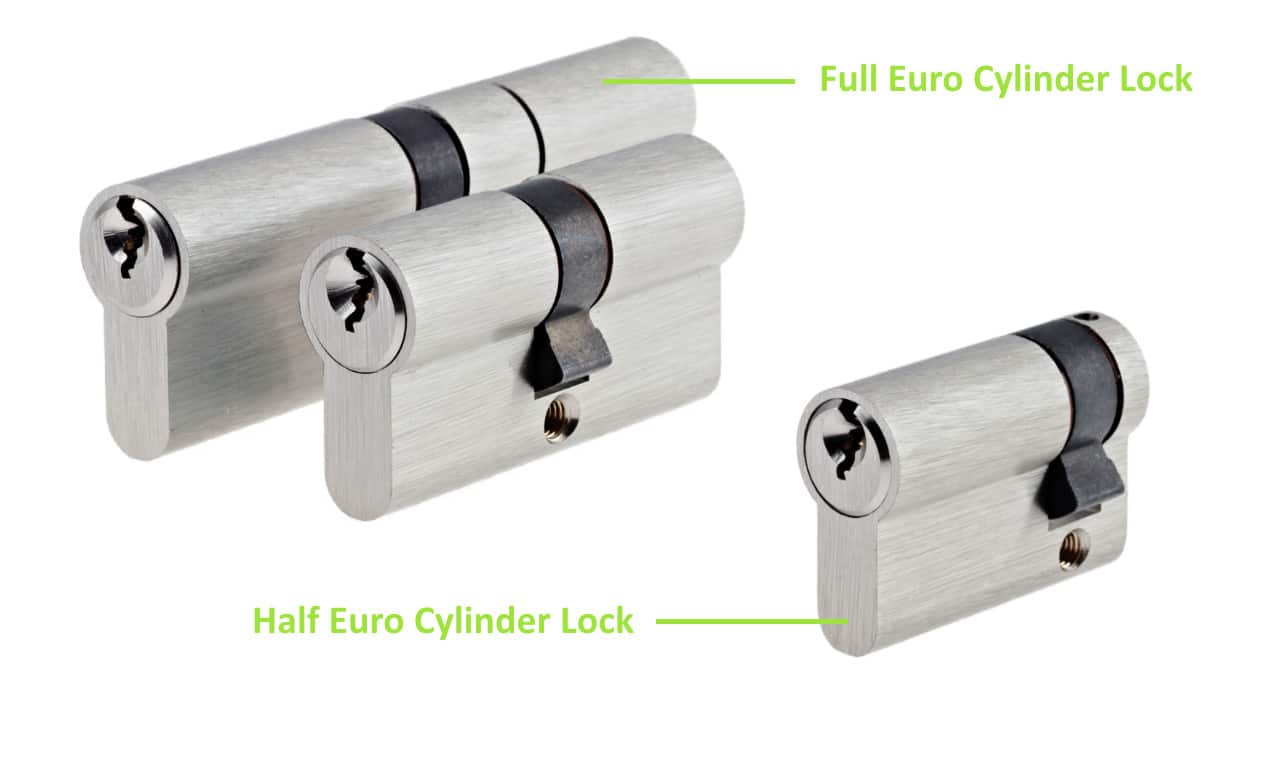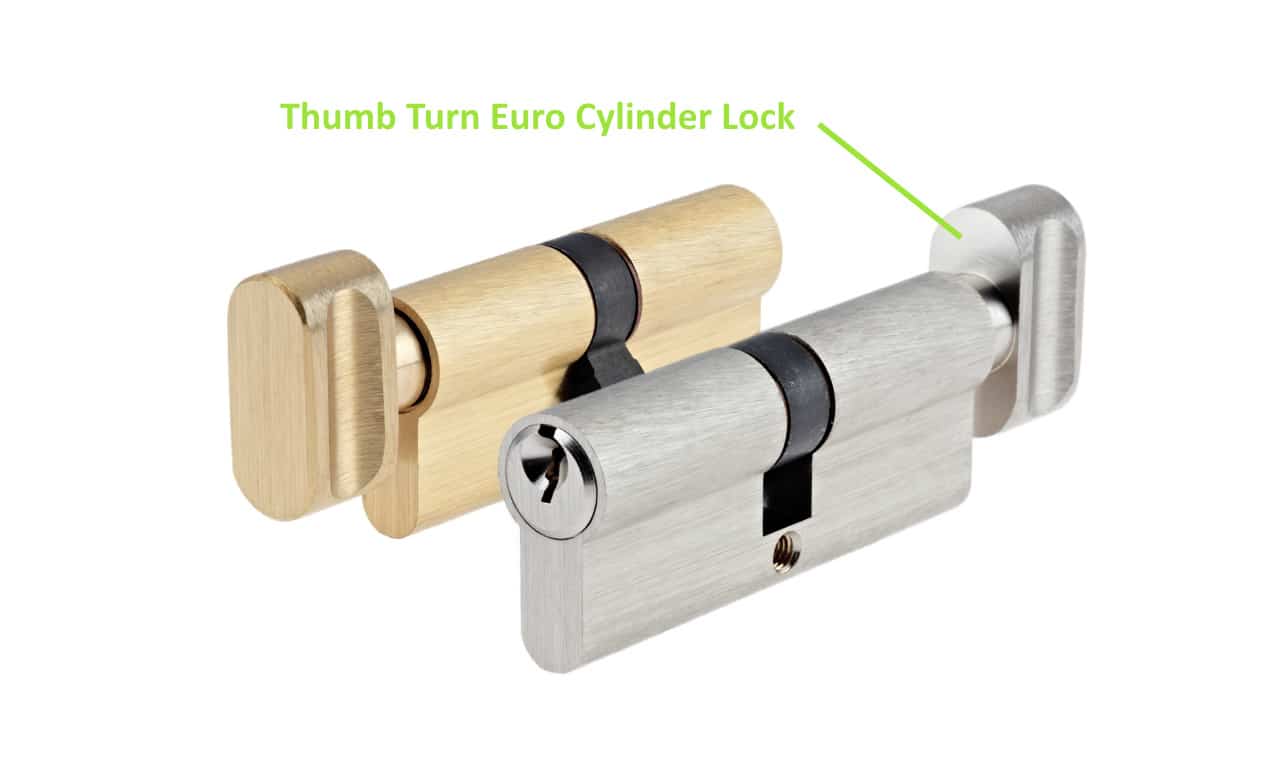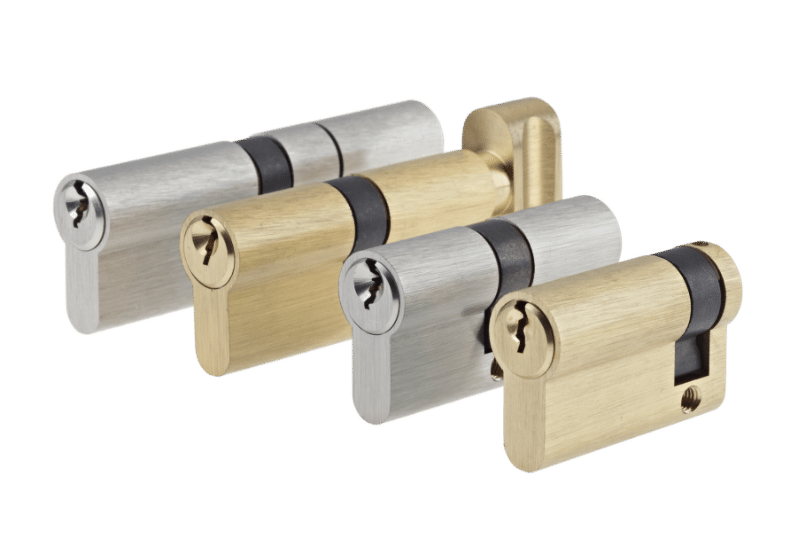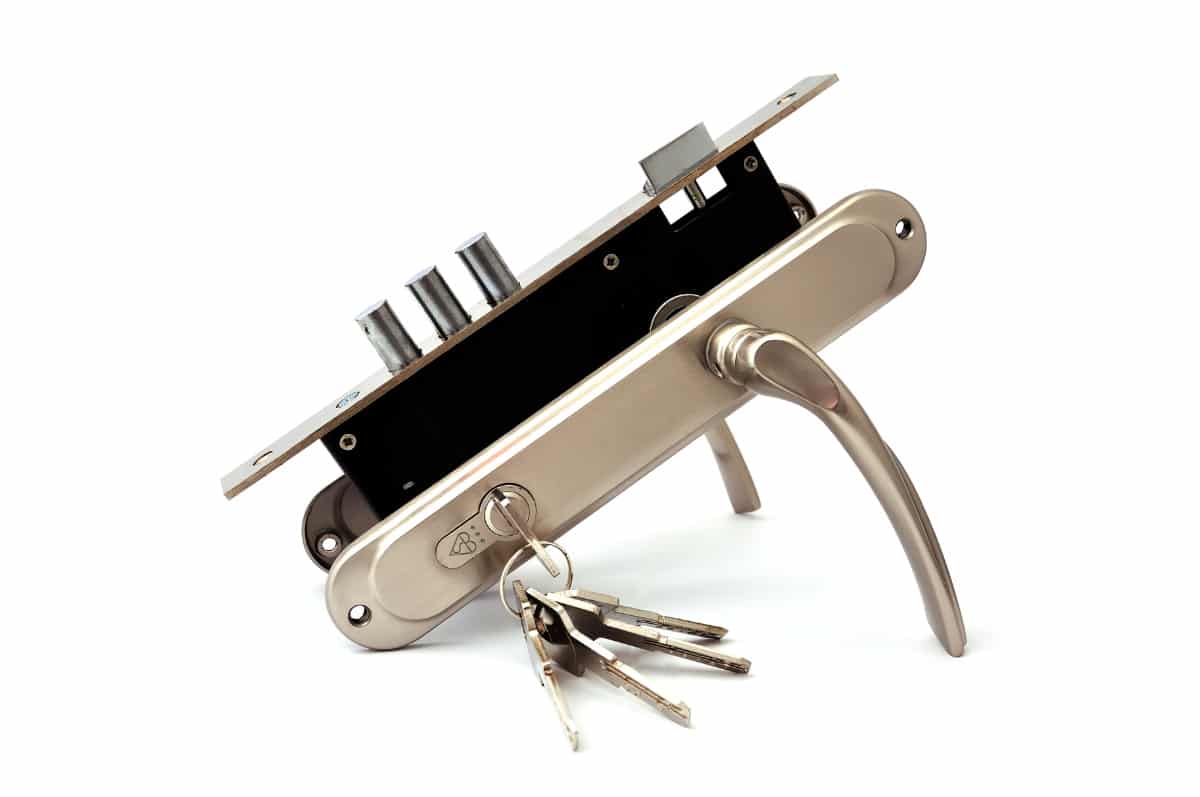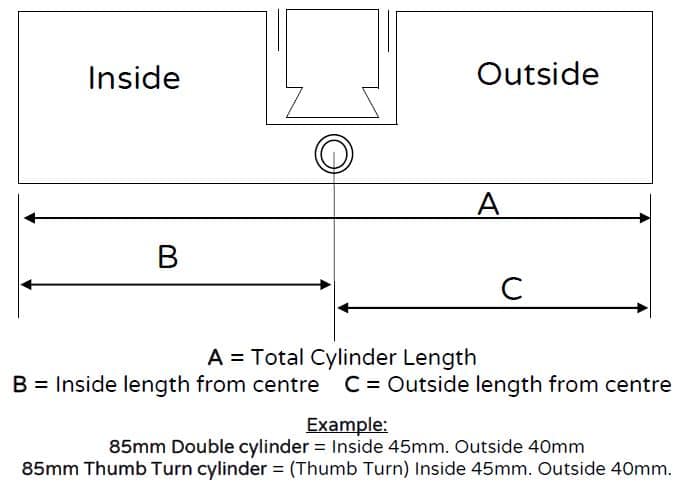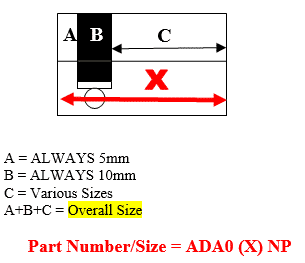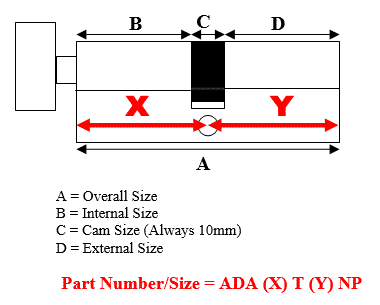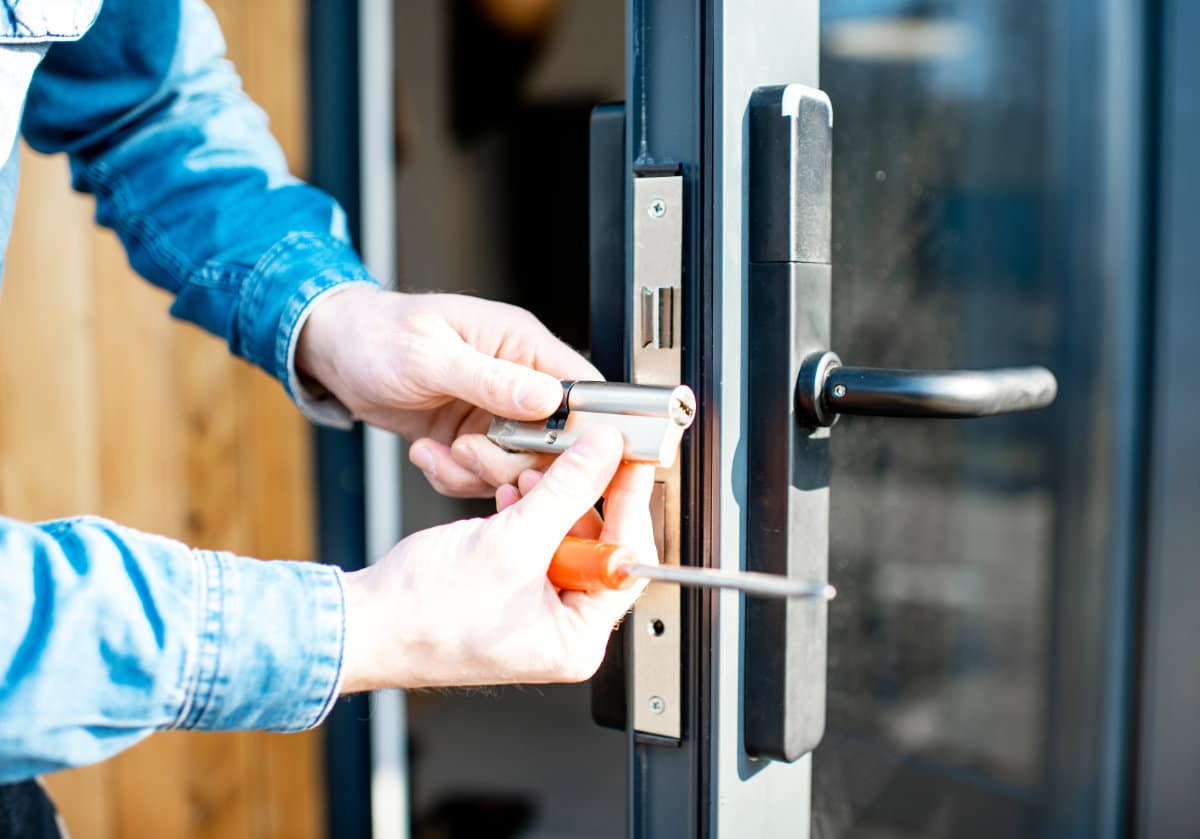Knowledge Hub +
Euro Cylinder Locks Explained
Your guide to the Euro Cylinder Lock
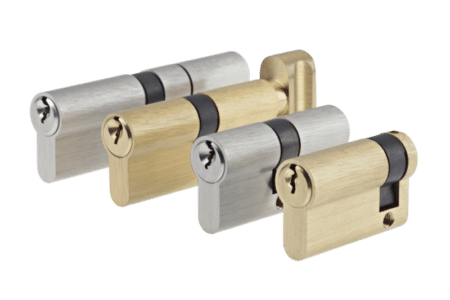
Contents
Click below to skip to a section
Still Have A Question?
Contents
Click below to skip to a section
Still Have A Question?
What is a Euro Cylinder Lock?
A Euro Cylinder lock, or ‘pin tumbler lock’ (as it was originally known when patented in 1805), is used primarily as a locking medium to operate a lock case. Euro Cylinder locks are today’s most popular locking systems amongst locksmiths and architectural ironmongers.
Euro cylinder refers to the profile of the lock – this is a cylindrical lock, which can feature up to eleven pins within its cylinder. It may also be called a euro lock barrel, or euro profile lock cylinder - calling attention to the shape of the lock.
The euro cylinder lock is one of the most commonly used lock profiles by locksmiths and architectural ironmongers since it is so easy to install, modify with additional security measures, or replace; it is seen in both domestic and commercial properties, offering protection and security for a variety of premises and facilities.
Master Key Systems are a trusted name within the industry, and our euro cylinder door locks are some of the best on the market. Our 3-star euro cylinder door lock is designed to keep your property and belongings safe and secure, with 11 pins within the cylinder for maximum protection. We also supply a cost-effective 1-star euro cylinder door lock that safeguards your possessions with 6 pins in its cylinder. Trust MKS to keep your home, business and belongings safe and sound.
How do Euro Cylinder Locks Work?
There are five main elements that enable a euro cylinder lock to properly function.
- Revolving cylindrical cam
- Pin tumblers and springs
- Fixing hole
- Keys
- Security measures
The euro-cylinder lock, or a pin tumbler lock, is typically made up of 5 or 6 main pins, though this can be more and even up to eleven pins on dimple locks. 6 pin euro cylinder locks typically have 24 to 34 moving components within their cylinders.
The pins of a standard cylinder are divided into top halves (also known as upper, master pins or wafers) and lower (bottom) pins.
However, the division of a single pin into an upper and lower half is not even, meaning that in order for the shear line (or break between the top and bottom pins) to be even across the pins, they all have to be pushed to different heights.
This can be done by the indents on a key, which pushes up each pin by a different height so that the shear line is even across all pins. The top pins are secured by springs, which allow for the pins to be pushed
Dimple Locks
Dimple locks work by turning the key ninety degrees so that instead of cutting into an edge of a key for a standard euro cylinder and will often use the flat side of the key blade as the biting surface. This type of lock has unique dimple characteristics, making it more difficult to pick.
Types of Keys
Once the pins are aligned, the key will then turn, turning the revolving cylindrical cam and unlocking the door.
A key will generally only have one indented side, however symmetrical keys are available (where both sides of the key are indented), meaning it can be used any way round; not to be confused with dimple keys. The dimple key can have biting and warding located on one or both sides of the key to suit the number of master pins within the lock barrel.
Additional Security Measures
Additional security measures, such as extra pins, will offer better security for your property or home.
The more pins that a cylinder lock has, the more secure it will become and protect against the likes of lock picking, lock drilling and lock bumping. If the lock has a snap line feature, then it will also protect against lock snapping.
Dimple key locks are also something to consider for added security with their high complexity and side pinning.
Levels to the System
There can be many levels to a cylinder master key system. A basic system is where all cylinder locks are opened by a single Master Key but each of the door cylinders are opened by their own key often referred to as the slave or differ key.
This system is typical for a HMO or Landlord whereby the Landlord wants his own single master key to open all the locks, but to ensure that the tenant has a differ key that is unique to their own door.
Very often, the Landlord will also have a Cylinder Lock fitted to the main door. This door cylinder can be opened by the Master Key and each of the tenant's keys and this is referred to as a common entrance. Whilst this is not recommended, it is by far the most convenient Master Key System for HMO’s and landlords.
Euro Cylinder Lock Set-Ups
What does Keyed Alike mean?
When a lock is ‘keyed alike’ it means that the lock is identical to another (or many) thus meaning one key will operate all locks that are ‘keyed alike’.
This is Different to a Master Keyed System, whereby each door may have its unique key, but a ‘master key’ may still operate differed locks. Keyed alike groups are quite common in larger Master Key Systems typically for Risers or communal doors.
Standard Differ Euro Cylinders
The ‘standard differ’ Euro Cylinder is the most common cylinder lock. It’s widely available from DIY stores, specialist retailers and locksmiths.
Master Key Systems stock a wide range of Euro Profile and Oval Profile cylinder locks, or as they are sometimes called; ‘door lock barrels.
What does Keyed Differ mean?
Keyed Differ is when a lock is made to ‘differ’ and it means that every cylinder has a different key. You will not be able to operate another cylinder with the same key.
What types of Euro Cylinder Locks are available on the Market?
There are three main formats for the euro cylinder lock, these include the half and full euro cylinder lock, as well as the thumb turn cylinder lock.
Full Euro Cylinder Lock
The full euro cylinder lock, also known as a double cylinder lock, can be operated from both sides by a key. Each end of the double cylinder lock has a slot allowing for access by a key, as typically seen installed in property front doors.
Half Euro Cylinder Lock
The half euro cylinder lock, or single cylinder lock, refers to it being accessed with a key from one side only. This is suitable for applications such as garages or storage units, where only external locking and unlocking is necessary.
Thumb Turn Designs
Similarly to the single cylinder lock, the thumb turn cylinder lock can only be accessed with a key from one side.
On the other side, a knob is used to open the door without the aid of a key. The thumb turn offers a quick and simple exit under hazardous conditions, such as a fire, or for those who struggle with mobility. It is often used in securing property backdoors or internal rooms, however can easily be used in front entrances too.
A large variety of thumb turns have been developed over the years to allow them for use in a diverse range of commercial and domestic buildings where the users have limited mobility or conditions such as Arthritis.
Here at Master Key Systems, we’ve developed a range of cylinders including a DDA-standard disabled thumb turn that fits both Euro Profile Cylinders and Oval Profile Cylinders.
There are a variety of euro cylinders sizes available to suit the applications of these locks, no matter where they are used.
How the Euro Cylinder Has Developed Over the Years
One of the first developments made to the ‘pin tumbler lock’ was the introduction of anti-drill locks. Designed to prevent criminals from drilling into the ‘core’, or, ‘plug’ of the Euro Cylinder. It also prevented drilling below the plug into the body of the Euro Cylinder, where damage could be done to the spring drivers and operating pins.
Just like in modern times, people would accidentally lose their keys, and so locksmiths were required to pick doors open for their customers. The criminal fraternity soon spied an opportunity to break into properties by picking Euro Cylinders, and so new measures had to be taken. Anti-pick locks were developed and soon became the norm.
Many key types have been designed for use with Euro Profile cylinder locks, mostly created by manufacturers attempting to set trends with patented designs. However, designs that weren’t protected by patents were ultimately copied and an industry was created supplying key bars and locksmiths with key blanks. As the demand for euro cylinders grew, they became more readily available.
How secure are Euro Cylinder Locks?
Euro cylinder locks do offer basic protection against illegal or unwanted access to a property. However, this security can be amplified with the addition of the following measures. Euro lock cylinders can be modified to withstand the illegal snapping, bumping, drilling, and picking of locks.
Anti Snap Euro Cylinder
Anti-snap measures allow the euro cylinder lock to break off at a point where the lock remains intact, and usable, offering protection after a burglar has attempted to snap the lock.
Anti Pick Euro Cylinder
Picking alludes to manipulating the pins inside the lock to open the lock without damaging it; anti-pick locks are designed in ways to evade this method of illegal access.
Anti Drill Euro Cylinder
An anti-drill lock must undergo scrutinous testing to be awarded a Kitemark, which signifies this lock is able to resist drilling which may be used as a means of breaking a lock.
Anti Bump Euro Cylinder
Bumping is an illegal access method that utilises a specially designed key to gather the pin tumbler combination. Bump-resistant locks were designed to overcome this method.
What is BS EN 1303?
Single, double, and thumb turn cylinders all fall under the BS EN 1303 Standard. This is a British classification system defined by safety and security tests that are applied to a lock; eight digits are assigned to a cylinder, to highlight how effective it was during the eight tests, which range from corrosion resistance to torque resistance.
Keen to be one step ahead of criminals looking to exploit weak locking systems, the industry introduced British Standards to encourage manufacturers of Euro Cylinder Locks to improve not only their reliability but also its actual security level. In common with responsible manufacturers, Master Key Systems secured BSEN 1303 2005 on its range of Euro Profile Cylinders.
The BSEN 1303 2005 standard ensures minimum levels of reliability and degrees of security depending on the standard achieved during testing. This was to be the start of a new era for Euro Profile Cylinder Locks. A new standard was created to offer the many users of Euro cylinders a wider choice depending on the application i.e. low-level risk to high-level risk of a break-in.
What is TS007?
TS007:2012 is the updated BSI Kitemark – this is a security rating given to locks that have been tested on their endurance under attacks, such as lock picking or lock bumping. A TS007 lock will be assigned a star rating (either 1 or 3), to demonstrate the levels of security against unwarranted methods of access. BSI Kitemark products can be identified by a heart-shaped logo, with the correlating number of stars.
What is Sold Secure?
Sold Secure is a leading UK certification scheme which assesses the resistance of security products, such as locks, against tools used to manipulate or break the products.
- Bronze offers resistance against basic tools
- Silver offers resistance against enhanced tools
- Gold offers resistance against dedicated tools
- Diamond is the highest level of resistance, offering resistance against specialist tools
Sold Secure rated products by a Bronze, Silver, Gold, or Diamond rating.
Master Key Systems have been awarded the Sold Secure Diamond Standard for the Adapta Prime HS.
Understanding the Star Ratings on Your Lock Cylinder
Using a high-security euro lock will often have an assigned BSI Kitemark star rating.
This ensures to homeowners, landlords and locksmiths that the cylinder locks are proven to have a high degree of security features.
But how do you know if a lock is BSI star rated or has the security features you need?
1 Star Euro Cylinder Lock
A 1 star euro cylinder passes the lock breaking method tests as determined by BS EN 1303:2005 – a standard that does not include lock snapping. It is recommended a 1 star euro cylinder is used in conjunction with 2 star door hardware, such as handles or cylinder guards, to achieve a 3 star rating and increase the security of the property.
3 Star Euro Cylinder Lock
TS007 3 star locks pass 5 methods of attack, including lock snapping, drilling, picking, bumping, and plug extraction. 3 star locks are recognised as leading high security cylinder locks.
The Security of Modern Locking Systems
Euro cylinder locks do offer basic protection against illegal or unwanted access to a property. However, this security can be amplified with the addition of the following measures. Euro lock cylinders can be modified to withstand the illegal snapping, bumping, drilling, and picking of locks.
Traditionally Cylinder Locks were measured excluding the operating cam, for example, a 60mm euro-cylinder would be specified as a 25/10/25 the 10 being the dimension of the cam.
Today this is not so common. The advent of PVCu doors and large security doors has brought about the need for offset cylinder door locks. As an example, a 100mm cylinder could be split 40/60, i.e. from one end of the cylinder to the centre of the cam it measures 40mm and from the other end 60mm.
This change in the market has required the manufacturers such as Master Key Systems (MKS) to ensure they carry a range of offset euro cylinder locks, capable of being Master Keyed.
By far the most specified Euro Cylinder is the Cylinder and Thumb Turn or key & turn. This has key access on the outside, with a thumb-turn on the inside used for locking and unlocking the door lock.
This type of cylinder is an absolute must when fitted to a final exit door in any public or managed spaces or accommodation. As with all other euro cylinder locks, a cylinder with thumb turn comes in a variety of sizes, both equal splits and offsets.
How to Measure a Euro Cylinder Lock
Euro Cylinder Door Compatability & Thicknesses
Euro cylinder locks are compatible with uPVC, wood, composite, aluminium, and steel doors; they can moreover be used for internal and external doors. External doors typically require the additional security of a six pin (or more) lock, whilst internal doors generally require five pins.
Euro cylinder lock measurements should take into account the thickness of the individual door, since the lock should not protrude from either end of the door, nor be swallowed by the door if it is too short. Protruding locks are more vulnerable to attack from illegal activities such as lock snapping.
Measure your Euro Cylinder Lock
It is possible to measure a euro cylinder lock while it remains within a door, but can alternatively be removed before measuring.
To remove a euro cylinder lock, simply loosen and remove the central screw on the face edge of the door by way of a screwdriver; silicone spray can further be applied to help lubricate the screw.
This screw can be located by tracing a line from the bottom side of the euro lock barrel to the face edge, where the screw sits. If necessary, a key should be inserted to align the cam tongue and lock body, turned slightly (around 45 degrees) and worked to slide the lock out.
A thumb turn lock will not require this latter step, and can be pulled out after the central screw is removed.
For the door lock replacement of a correctly fitted lock, you can measure the now isolated existing euro cylinder lock. Measure from either side of the central screw to the end of the lock for these figures. This takes the respective external and internal measurements, which may differ in offset locks – this is why it is crucial to take separate measurements for either side.
Alternatively, whilst measuring for a new door lock, you can measure the door width. Again, take two separate measurements – one from the external edge of the door width (including supplementary furniture such as the handle) to the centre of the door edge, and another from the internal edge of the door width to the centre.
Euro Cylinders can vary in Length
The Euro Profile Cylinder, or Euro Lock Barrel as it is sometimes referred to, is available in a variety of lengths. Euro Cylinders range from 60mm up to 120mm, equal lengths from the central cam. Whilst Single or half Euro Cylinder locks typically range from 40mm to 50mm.
For example, an 80mm length standard Euro Profile Cylinder lock will measure 40mm on either side of the operating cam.
With the advent of PVCu doors; unequal or offset Euro Cylinder locks have become the norm. Sizes vary from 70mm up to 120mm.
For example, an 85mm lock will measure 40mm from one side of the cam and 45mm from the other side.
How to install a Euro Cylinder Lock
To replace a euro cylinder lock, installation should be correctly undertaken. Installation is a painless process in most cases, and should only take around 10-30 minutes to complete with the aid of a screwdriver, and possibly a file.
For euro cylinder door locks that require a key, insert the key and turn slightly to line up the cam tongue and lock body.
The lock can then be inserted into the door; a file can be used to shave down the hole if it is too tight whilst looking to replace a uPVC door lock or a wooden door lock.
Once the lock is in position, the central screw can be secured to fit the lock.
For more a more in depth step-by-step walk through, explore our euro cylinder installation guide. This advice was provided by the Guild of Architectural Ironmongers, the Door & Hardware Federation, the Glass and Glazing Federation and the Master Locksmiths Association to help with the correct installation of euro cylinder locks.
Expert Advice: Though installing a new cylinder lock can be quick, easy, and carried out by the average DIY'er, it's important that the new cylinder is securely fitted. Improperly fitted cylinders can result in compromised security or result in the breaking of lock or door hardware. We recommend contacting a Locksmith if you are unsure about fitting a new Cylinder to your door.
Maintaining a Euro Cylinder Lock
Good maintenance will assist with the correct functioning of a cylinder lock, as well as the longevity of the lock.
Cleaning and Lubricating your Lock
It is important to clean the external face of a lock, removing the build-up of grime, so as to prevent premature deterioration. A lock can be cleaned with a non-abrasive cloth and gentle detergent, such as soapy water.
Lubricating a lock will further keep it in good working order, and help prevent it from sticking; this can be done with a lock lubricant such as Silicone spray.
Wondering how to Lubricate a Lock?
A lock can be lubricated once it has been dismantled or can be lubricated through a penetrating silicone spray inserted directly into the keyhole.
Expert Advice: We do not recommend an oil spray or any form of penetrating oil is used. If oil found its way into the cylinder it can cause the lock shims and lock pins to stick - therefore causing further damage to the cylinder lock.
How often should you Clean or Lubricate your Euro Cylinder Lock?
A lock should be cleaned and lubricated as needed – certain locks may get more use, so will need more attention; however, this is recommended to be completed a couple of times a year.
3 Tips for Jammed or Damaged Door Locks
1. What to Do When Your Lock Is Jammed
There may be several causes for a jammed door lock, therefore, it is always best to consult a professional locksmith to resolve the issues correctly. That being said, some common causes of jammed locks could be loose hinges, a loose screw set or a form of corrosion such as rust.
Firstly, it is important that you carefully inspect your lock and the surrounding components to understand the problem. If you notice signs of loose hinges or perhaps a loose screw set, tightening them with an appropriate screwdriver may help alleviate the jam.
In case of rust buildup, applying a silicone-based lubricant can often loosen the lock and restore its functionality.
As mentioned throughout this guide, It is important that you avoid using oil-based lubricants as not only can it cause further damage to the internals but it will also attract dust and debris, further adding to the problem.
2. Easy fixes for a Damaged Door Lock
A door may pull away from its hinges if they are loose, causing the misalignment of the deadbolt, and making the lock difficult to use. Using a screwdriver to tighten the hinges will often resolve this issue.
A screw set refers to the internal spindle which connects the knobs on either side of a door – when this system becomes loose, the knobs will not be effective. Once the screw set around the knob or under the faceplate has been located, it can be tightened. This system may need further lubrication to ensure it is working properly.
3. What to do when you've lost the keys to your property
There are numerous reasons why you may need access to a property without the use of keys – they may have been lost or have been locked in the property. It is best practise to consult a locksmith if you’ve lost the keys to your property, to save the risk of damaging the lock or door.
Selecting the best Euro Cylinder Lock for your Door
There are several types of euro cylinder locks, such as a double cylinder or a single cylinder, or operated through a standard differ or keyed alike system. It is best to review the type of door the lock will be used on, who will use the lock and how it will be used, before determining the best type of lock for a door.
How far should my Cylinder Lock stick out?
Ideally, the lock should be tight to a door surface and sit flush, so that it is less vulnerable to unwarranted attack. The further a lock sticks out from a door, the more susceptible it is to being snapped or otherwise damaged.
Expert advice: If for whatever reason you find your door cylinder protruding or sticking out, an acceptable figure, but not recommended, would be in the region of 3mm. Anything more than 3mm beyond the handle plate can put your property at risk. We recommend that you re-measure to ensure you have the best appropriate size for your door.
When should I change my locks?
It is recommended to change a door lock once every 7 years. However, it should be changed sooner than this if the lock has been damaged, or if personal circumstance (such as losing keys) determines it to be. On the other hand, a lock may last longer than this if the correct maintenance is applied.
Ready To Discuss Euro Cylinder Locks?
Alternatively, you may wish to call our team on 01902 737 672 or email us via sales@masterkeysystems.co.uk. We look forward to hearing from you.

